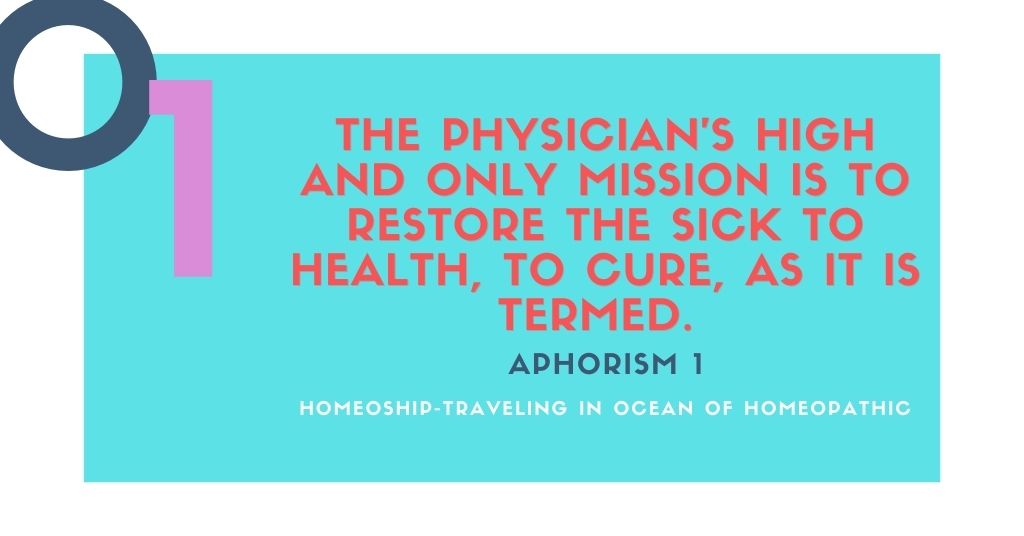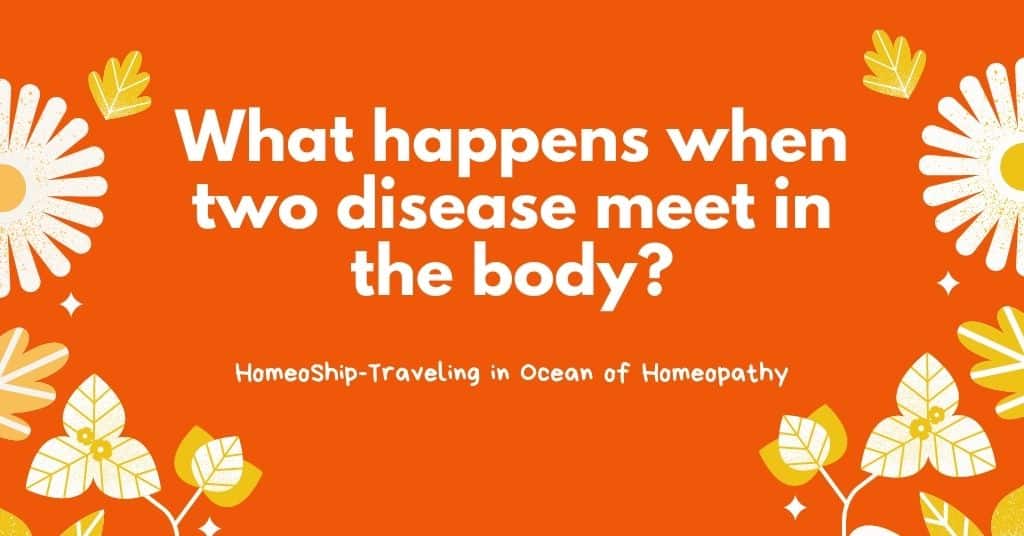Do you know what master Hahnemann wanted to convey with the first aphorism, he explains the core mission of the physician. He significantly tells that a physician should not be trapped by multiple objectives and goals it should be focused on one and only one mission which is to restore the sick to health and nothing else.
In the introductory chapter of the Organon of Medicine, Dr Hahnemann describes how he got discontent and found fault with the therapeutic practices, prevailing during his time and explains to us the mission of physicians in homoeopathy.
The physician’s high and only mission is to restore the sick to health, to cure, as it is termed.
His study, experience, and deep logical thinking led him to conclude that medicines were practised more as an art of physic (over-drugging) than as an art of healing. The purpose of the physician was often mistaken and the physicians whereof the track of the physicians. At that time, they forgot that medicine to be fruitful and effective must be studied and practised to cure a sick person and prevent the man from falling ill.
The study and the practice of medicine from any other viewpoint or with any other objects in the mind will fall short of the mark and will misguide the physician. This was the purpose of writing the very first aphorism at the very beginning of the Organon of Medicine. Dr Hahnemann wanted to emphasize that for a physician nothing is more critical than curings his patient. He found that during his time physicians are busy with the development of science and therefore they failed in measurable practices.

Instead of using other words like duty, goal, responsibility, etc. Dr Hahnemann has used the important word “Mission” which means the physician’s foremost ambition or the bound duty of the physician or the purpose for which he has taken the birth of the most important task of his life. It’s the bound duty of every physician that should be considered most important and above all the consideration of the material gains and advantages.
The physician must have an inner instinct to remove the suffering of the sick individual. the inner desire must not be just for personal fame or interest or due to compulsion, he has described it as “high and only”. He uses the word high especially to stress curing the patient. The physician should not try to cheat the patient, it should be according to the ethics of the noble profession.
The physician should not over-drug the patient just for material gain. Dr Hahnemann uses the word “and only” to signify that curing a sick individual is the sole necessity of a physician which he has to perform. No other activities are as important for a physician as curing the suffering of the patient.
Besides this Dr Hahnemann says “to restore the sick to health” he does not say just removal of symptoms of disease but, he uses the word restore which means bringing back the altered state of health to the original healthy state. Superficially removal of the symptoms may be forcible suppression of symptoms or removing the intensity of symbols for a short period, which may be palpation or suppression or both, they may falsely show the cure has taken place, but it is never cured. But when the health is restored and then only the physician claim that he cured the suffering of the patient.
Besides, he did not use the word diseased or disease person or symptom but he used the word “sick” By sick he meant the internal symptom of a person which reflects on the mental and the physical plane or sometimes on both planes. Whenever a person has the disease he is affected as a whole. A single part or organ or a single side is not affected. The feeling of uneasiness is felt mentally, physically as well as emotionally, and therefore in curing a person, he should be considered as the whole and not only the part of the organ affected.
A sick man wants to be cured of his suffering as soon as possible, so what else should engage the attention of the physician rather than cure the patient? Homoeopathy does not consider disease as something i.e. different from a whole life source but the derangement of the complete life source is termed as sickness.
According to Allopathic science, they understand that the man has a swollen knee, so he is sick but in Homeopathy, we say that the man is sick, so he has a swollen knee, which means that the whole man is considered sick not only his knee.
Article You Must Read:
- 99+ Unique Name Suggestions for Homeopathic Clinic
- Which is the best book for Organon of Medicine (Homeopathy)?
- What does it mean by dynamic action in homoeopathy?
He must be individualized from the other people who are suffering from the same name of disease. The removal of symptoms does not mean a cure has taken place, only restoration of the state of health means a cure, which is further explained by Dr Herring according to all true cures follow or well-defined pattern which is known as “Herring’s law of cure” which is as follows:
“The cure must take place from above downwards within outwards, from centre to periphery, from more important organ to less important organ, from the reverse order of appearance of symptoms.”
Dr Herring explains that the cure must be “from above downwards” because various organs of the body-brain, lungs, hearts, etc. are in the upper part of the human body, such an organ should be given prime importance. “from within outwards, from centre to periphery” means the disease thrown outside, if the disease is forcibly suppressed then the external aspect it was to the interior, which is never cured.
“from more important to less important organs” because various organs are responsible for the animation and maintenance of life and in the reverse order of appearance of symptoms. The symptoms that appear last should go first because the symptom that has appeared the last is the most severe to the patient. As the disease has progressed and so the symptoms which appear the last must be concentrated for their removal along with the duty of the therapeutics,
The physician must have to perform other functions also, he is a diagnostician or prognosticator, a public health officer, and a medical-legal jurist. As a Diagnostic, he has to find out the name of the disease because he has to satisfy the curiosity of the patient and his relatives with the diagnosis he can manage the patient properly. Similarly, the prognosis i.e. knowing about the disease plays an essential role in the management of the patient with knowledge of the prognosis the physician can avoid the complications of diseases.
When a person falls ill, his disease may be infected and chances of spreading contagion, in such conditions, the physician is supposed to take the necessary precautions by giving necessary advice to society, so that the disease may not spread, this is how can act as a public health officer e.g. the advice regarding the disease, regime, spread of the disease, etc.
Suppose a man died due to an unnatural death or some foul play is suspected, then the physician is supposed to help the law and society with safety and security. In this way, he acts as a medical-legal jurist though he has so many responsibilities, the chief part of the duty is concerned with curing the man when there is a sickness.
And this was part of the duty in which physician time failed most miserably, though it was the principal occupation of every physician. That is why Dr Hahnemann defines a physician’s mission at the very onset of the organ and medicine so that it may not be understood.
Not only does the first aphorism but its footnote also contains a significant value, it is about Theoretic Medicine, in which he criticises it and explains how irrational it is, if you want to know more about Theoretic Medicine then you must read our article on Theoretic Medicine
Hope you understand the Mission of the physician if you have any doubts you can always ask us in the comment below. Follow us on Instagram for more updates.


